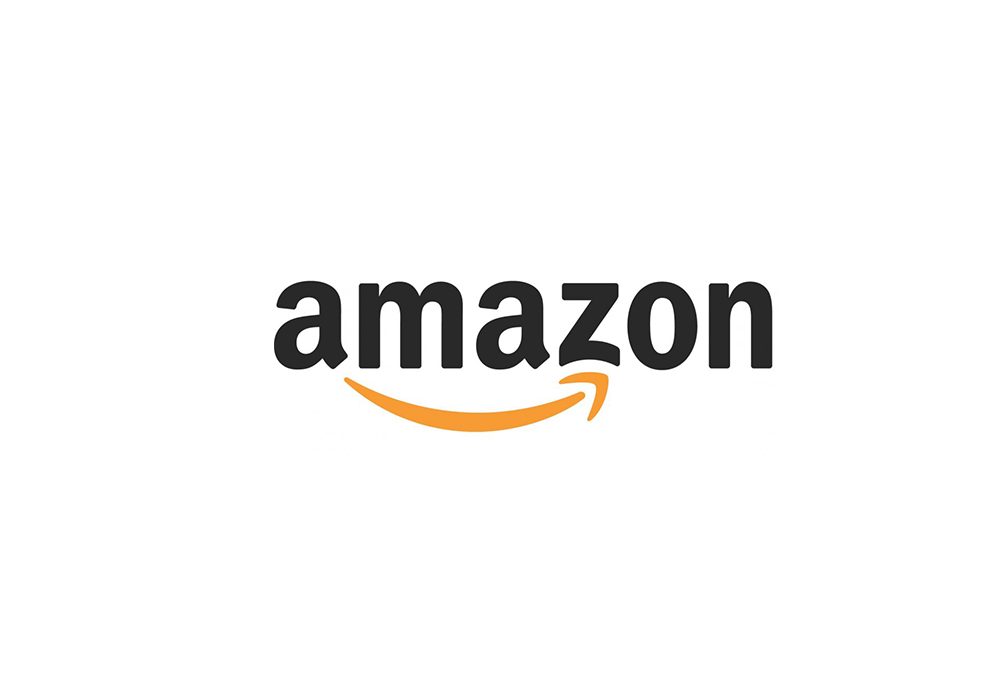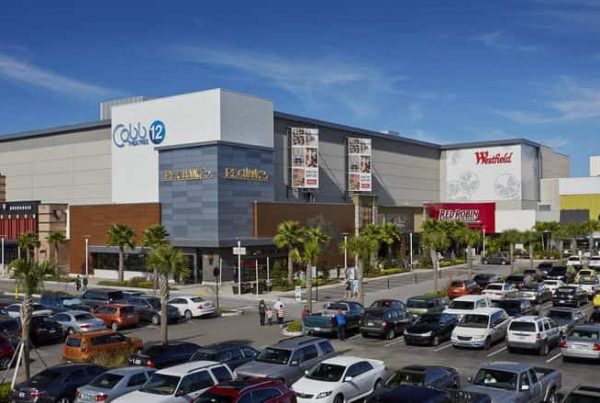By Joel Groover
Speculation about the real estate role of Amazon.com is growing as more information emerges about its closely held plans for U.S. stores. In metro Houston, to cite one market, brokers watch the local headlines for scoops on the Amazon rollout, and they tend to share any tidbits they happen to run across in the field, says Jason Baker, co-founder of Houston-based brokerage firm Baker Katz, a member of X Team International. “I’ve been impressed with the way Amazon has kept its real estate plans quiet,” Baker said. “They’re evidently working on dozens of deals, but they have managed the process in such a way that the majority of the locations are still unknown.” In Houston the scuttlebutt is that Amazon is planning to open at least five grocery stores in suburban areas around the city, he says.
Amazon, which did not respond to interview requests for this story, is also leasing a significant amount of space for distribution centers that could be used to fill online orders and the shelves of any new Amazon store in metro Houston. “Without a doubt, Amazon has made a big commitment here from a distribution standpoint,” Baker said. “They just finished construction on 1 million square feet of new space, in addition to what they already have here, and they are evidently working on more.”
According to Bloomberg, which cites internal Amazon documents, Amazon is planning a national rollout of grocery stores next year and could ultimately open as many as 2,000 stores in one format or another. The company reportedly has ambitions to become a top U.S. grocer along the lines of Walmart or Kroger by 2025. That would be a significant development for leasing teams, brokers and landlords across the country, not to mention Amazon’s potential competitors and co-tenants.
But Amazon continues to experiment with brick-and-mortar concepts that could affect the industry in other ways as well, by means of signed leases at shopping centers and through disruptive new technologies, observers say. In addition to pop-up stores and order-pickup kiosks, these efforts include the Amazon Go test store in Seattle (which eliminates cashiers and checkout lines through so-called Just Walk Out shopping); Amazon Books (10 of these stores are open now, with an undisclosed number in the pipeline); and Amazon Restaurants, a service that allows diners to order food for home delivery from hundreds of restaurants. Already available in roughly 25 U.S. cities, Amazon Restaurants stands to drive additional sales at shopping centers that have restaurant tenants.
Amazon’s innovations tend to attract plenty of attention. But how seriously should retailers and developers take the likes of Amazon’s Prime Air drone-delivery program, or its Go store, which uses advanced tech to let shoppers grab stuff off the shelf and leave, no checkout required? The shopping center industry clearly has need to invest in new technologies and respond to change, says Rachel Elias Wein, president of WeinPlus, a real estate consulting firm. But Amazon’s spending famously outstrips its revenue growth, Wein points out, and such an approach would hardly be a fit for traditional grocers, retailers or developers, particularly those beholden to Wall Street. “Jeff Bezos [Amazon’s founder] thinks about new concepts differently,” Wein said. “Where many people choose an idea based on its likelihood of success, he makes his bets based on how big it could be if it were successful. It is an entirely different calculus.”
That is different, to be sure, and it is expensive to boot: In 2016 Amazon ramped up its capital expenditures to some $6.7 billion, up by 46 percent over the previous year. While the company has scored hits with moneymaking businesses like Prime and Amazon Web Services, Wein notes, the relevant question for retail real estate is whether any Amazon experiments that affect real estate will truly catch on. “Amazon Go, AmazonFresh, Amazon [Prime] Now — all of these new attempts may or may not work,” she said. “But if any one of them takes off, it will be hugely impactful to retail.” With sensors, cameras and machine intelligence borrowed from the development of driverless cars, the Amazon Go initiative is likely to remain small-scale for now, Wein says. “Does Amazon Go make sense? Do we want to go shopping where we can’t find someone to ask for help? I’m not sure,” she said. “For the time being, the approach at Go is likely far too expensive to be profitable.”
Nonetheless, leaders in the U.S. grocery sector are certainly paying attention to the future possibility of stores without need of cashiers, says Joseph McKeska, co-founder and president of Oak Brook, Ill.–based Elkhorn Real Estate Partners. The newly launched firm, which helps grocers and retail real estate investors optimize their portfolios, is a joint venture with A&G Realty Partners. “There’s a lot of buzz about Amazon Go,” McKeska said. “It’s another example of changing dynamics and the disruption that is likely to take place in the industry in coming years.”
Even as Amazon experiments with opening brick-and-mortar stores, some of the nation’s top grocers, including Kroger and Walmart, are scaling back their own real estate expansions, in part to reinvest that money into their stores and ramp up their omni-channel capabilities, notes McKeska, who formerly headed real estate operations for Southeastern Grocers and, earlier in his career, SuperValu. “In the United States Walmart has gone from building 230 new stores in 2015, to 130 stores last year, to 55 this year,” he said. “Over the last four years, excluding acquisitions, Kroger grew its footprint, in terms of number of units, at about 0.4 percent per year. That is a pretty low organic growth rate.”
But by spending to remodel their stores and to develop and test new technologies, chains like Kroger and Walmart are positioning themselves to compete with the likes of Amazon, McKeska says. Kroger’s tech experiments reportedly include sensor-equipped shelves that push product suggestions and promotions to shoppers’ phones, and a faster-checkout initiative that uses a mobile app paired with a handheld wireless device. This latter system, dubbed Scan, Bag, Go, enables shoppers to scan items and put them in their carts as they walk through the store; Kroger reportedly wants to link this to mobile payment technology, which could cut cashiers out of the process much like Amazon Go.
Amazon has opened at least 16 click-and-collect kiosks on college campuses since 2015 in a bid to bring free same-day pickup to students who are Prime members. Meanwhile, its Prime Now service offers two-hour free delivery to members in at least 30 U.S. cities. According to McKeska, national grocers are feeling the pressure from these and other efforts and have responded with big investments of their own. “Grocers are developing their own digital and e-commerce capabilities,” he said. “Walmart, which has roughly 4,300 stores in the United States, now offers online pickup at 600 stores, and it wants to double that by next year.” Kroger, meanwhile, offers its ClickList online-ordering and pickup program at about 440 of its roughly 2,800 stores. “Many of the ClickList facilities are neatly designed in that they include elements such as drive-through check-in kiosks and covered, dedicated parking stalls for order pickup,” McKeska said.
But grocers and other retailers are not yet paying enough attention to the powerful potential of Internet-connected, voice-activated speakers such as those now sold by both Amazon and Google, according to Los Angeles–based technologist Brian Roemmele, founder of the tech-focused Multiplex Magazine and CEO of Pay Finders.com. Users of Amazon’s Echo products can restock their kitchens simply by saying, “Alexa, order coffee,” or “Alexa, reorder paper towels.” But just as most retailers initially failed to see how the Internet could transform shopping, the national chains are once again allowing Amazon to take the lead on a revolution in commerce, Roemmele says. “The shortest distance from the store to your kitchen is the Echo device,” he said. “If you are in the consumer’s kitchen, you are literally in their home. I call it the ‘voice first revolution.’”
Retailers should be racing to figure out how to be a part of this revolution, most likely through strategic partnerships that leave the expensive development of hardware and infrastructure to third-party tech firms, Roemmele says. This past February, in fact, Google announced that Google Home users can now voice-shop retailers that belong to the Google Express program. That list includes Bed Bath & Beyond, Costco, PetSmart, Walgreens, Whole Foods Market and about 50 others.
Thanks to inevitable advances in artificial intelligence, Roemmele notes, devices like Amazon Echo and Google Home will intimately “know” their users’ sizes, favorite brands, restocking needs and more in ways that confer a competitive edge. The devices could also be used to enable purchases that involve brick-and-mortar real estate: A shopper could tell Alexa to order some more socks for pickup at the Walmart kiosk on the way home from work. “It will know your intent and exactly what you mean by ‘socks,’” Roemmele said. “This is really a journey the retailers need to be on. Why wouldn’t you want to be in somebody’s kitchen?”
As McKeska sees it, competition from Amazon will be even more intense in the years to come, thanks to the continued growth of Echo. In particular, he says, shoppers will get in the habit of using voice commands to restock commoditized items found in the center of most grocery stores. Citing projections by the Food Marketing Institute and Nielsen, McKeska says that by 2025, online sales could account for up to 40 percent of food-at-home grocery purchases in the center store category. “Eventually, new homes will start to be built with some of this technology integrated into them,” he said. “You could see a day in which Alexa interacts with a shelf that has a sensor in it and then prompts you to order more paper towels because you’re running low.”
Even as retailers seek to respond to trends typified by Amazon, more developers are thinking harder about how their projects need to change to meet shopper needs in the omni-channel era, says architect Kevin M. Zak, a principal who specializes in retail and mixed-use projects for Cleveland-based Dorsky & Yue International. Poag Shopping Centers, for one, specifically asked Dorsky & Yue to think about these trends in the design of Poag’s 250,000-square-foot expansion of Spring Creek Plaza, in Edmond, Okla. Initial plans for the creek-side project include green space, a cinema, restaurants, a grocery and apartments, Zak notes, but the architects are also studying how to integrate new realities such as click-and-collect into the design. “We’re sitting down with Poag’s leasing and development teams to design the center around all of the different ways people order and buy product, how they pick it up and that type of thing,” Zak said. “We want this center to be out ahead of these trends.” It is slated to break ground later this year.
Retailers and developers are also working to compete in an area in which Amazon has a clear edge: knowing customers well enough to give them personalized experiences, says Ron Tannenbaum, a Dorsky & Yue architect. “Thanks to search histories and past purchases, Amazon knows exactly who you are and how you shop,” he said. “But how does that translate into the [brick-and-mortar] retail environment? How does that work in terms of being able to identify your customer or make recommendations?” While the answer certainly includes such technology as beacons that scan and analyze shoppers’ always-on cellphone signals, in some cases old-school approaches might actually work better, Tannenbaum says. “People going to brick-and-mortar stores are looking to experts, the people in the store, to provide recommendations,” he said. “They want to work with them.” And so retail developers are on the right track when they add concierge-type services to their properties, he says. By holding shoppers’ bags for later delivery to their cars or homes, or by processing shoppers’ returns so they do not have to walk to multiple retailers themselves, developers stand to bring more Amazon-like convenience to their centers.
Even Amazon’s brick-and-mortar stores may offer clues for existing chains seeking to improve the customer experience or to ramp up convenience, Tannenbaum says. Amazon’s new bookstores, for example, are not focused on warehousing huge quantities of diverse titles along the lines of, say, Powell’s Books, in Portland, Ore. Rather, they carry a smaller selection of carefully chosen titles. The books are stocked with their covers facing out, much as they would appear on Amazon.com. Printouts of actual customer reviews often accompany the titles, under such signage as Highly Rated: 4.8 Stars & Above, or Books with More Than 10,000 Reviews on Amazon.com. Retailers are noticing these data-driven and customer-friendly efforts already, says Tannenbaum. “They are trying to adjust accordingly,” he said. “Amazon is a bit of a role model for the industry right now, even for brick-and-mortar.”









